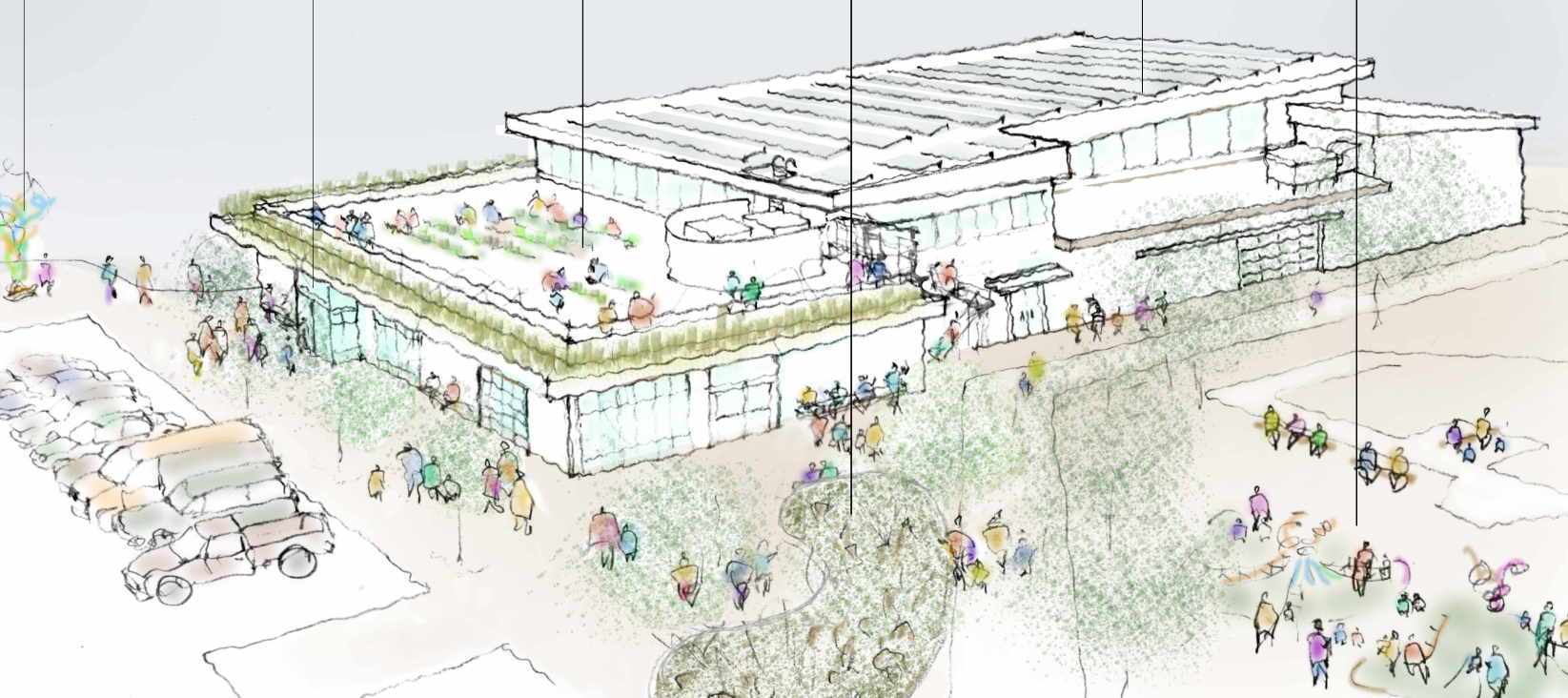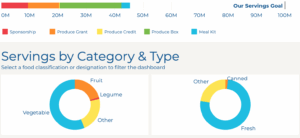Oregon Food Bank’s plans for a new community food center are putting it in the vanguard of hunger relief organizations that are reimagining how food banking can work.
Its Ontario Community Food Center, expected to open in late 2026, will be strategically located between a federally qualified healthcare center and an affordable housing development, with all three facilities residing on the same side of the same city block in an under-resourced area. In addition to a warehouse, the food center will feature facilities for community gatherings, a community kitchen, and space for on-site food distributions.
By co-locating with housing and healthcare, Oregon Food Bank is part of a growing trend among food banks that combines food access with other community services. In May, for example, Feeding Tampa Bay is expected to open a new facility that will let it pursue a “community service model” by devoting 50% of its non-warehouse space to a variety of community partners. Late last year, Greater Cleveland Food Bank unveiled its Community Resource Center that provides permanent space to 15 other nonprofit agencies alongside its warehouse and on-site food pantry. And San Antonio Food Bank is expected to break ground next month on an affordable housing project (delayed to date by permitting setbacks).
Such co-location strategies are a recognition that those suffering from food insecurity often face a tangle of related financial and health issues. “We know that in order to address the root causes of hunger, we need to look beyond just providing emergency food,” said Lindsay Grosvenor, Southeast Oregon Region Manager at Oregon Food Bank. In her opinion, she added, working through partners to create systems change “is the most effective way to end hunger and its root causes.”
The idea of community partners working together toward a common goal is becoming more widely accepted. In fact, the plan to combine housing, health and food services within a single city block started to come together in 2019 when a coalition of local leaders identified “food access solutions within new housing developments as a priority for addressing food insecurity,” Grosvenor said.
The new center will be located between River Bend, an affordable housing development that opened in July 2022, and Valley Family Health Care’s Fortner Medical Clinic, which opened in April 2023. River Bend Place’s 56 units were fully occupied within two-and-a-half months, while the clinic is already operating at capacity. Grosvenor is already envisioning community health workers from the clinic showing up during pantry distribution hours to sign people up for health services.
Aside from making it easier for people to access needed services, partnerships among community service providers can also pave the way for collaborative fundraising. Oregon Food Bank worked with a cohort of public and private organizations known as the Western Treasure Valley Food Systems Partnership, to secure in late 2021 a USDA Regional Food System Partnerships grant of just over $200,000 to complete the planning of the overall project. The food bank also secured $3.6 million in congressionally directed spending appropriations for fiscal 2023, which will cover about half of the projected budget for the new facility.
Groundbreaking is expected to happen about a year from now, with construction completed a year to 14 months after that. The new community center will replace an existing warehouse already in another part of Ontario, the largest city in eastern Oregon, located right on the Idaho border. The new warehouse, about twice the size of the existing one, will be one of five warehouses Oregon Food Bank runs throughout the state.
The community food center project is part of a broader campaign at Oregon Food Bank called Rooted + Rising, which aims to strengthen the systems that prevent hunger. Among the initiative’s four pillars is “reimagining food systems,” which includes the new community food center, as well as support for BIPOC growers and producers. Also on the agenda is “modernizing infrastructure,” so the food bank can better handle healthy, freshly harvested food. The food bank will also “amplify community voices” through year-round civic engagement and “strengthen local solutions” by funding projects prioritized by the food banks and pantries in the Oregon network. All in all, the Rooted + Rising effort amounts to an $80 million campaign to more effectively address hunger.
Oregon Food Bank has been focused on engaging the community as it develops the new center. “We have engaged with neighbors of the future sites,” Grosvenor said. “We’ve also engaged with small local growers and producers and food businesses that hope to have opportunities for expanding their services. As well as those who need it the most, some of our equity constituencies who live in and around the area.” – Amanda Jaffe and Chris Costanzo
CAPTION FOR PHOTO ABOVE: Rendering of the Ontario Community Food Center, courtesy of RESOLVE Architecture + Planning
Like what you’re reading?
Support Food Bank News









